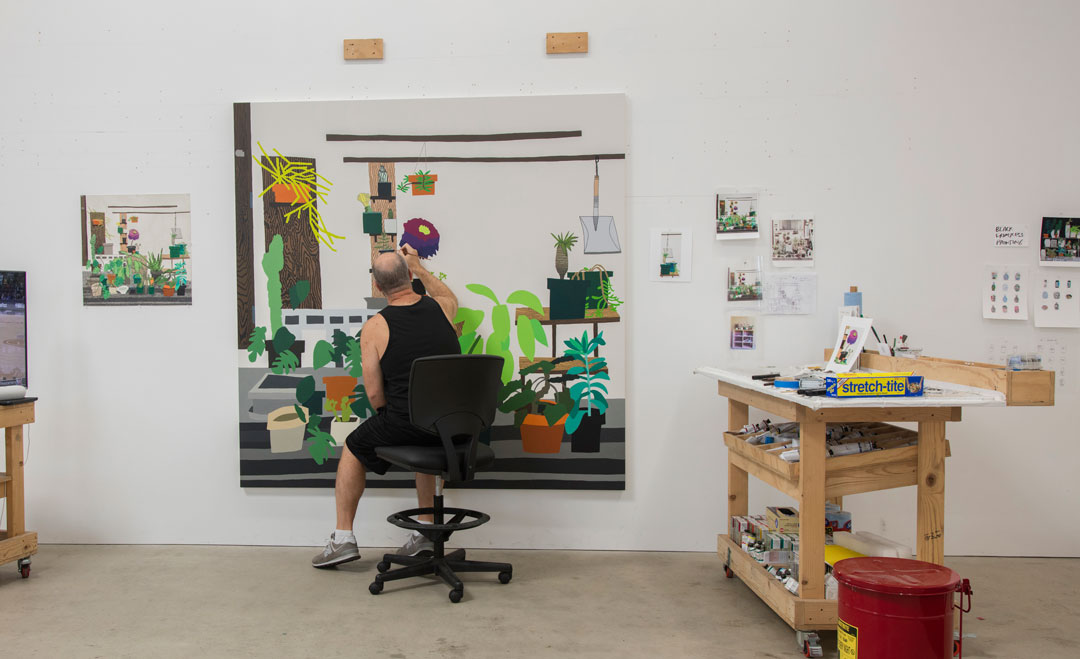
11 things we learned from Jonas Wood’s new interview
The artist sat down with fellow painter Mark Grotjahn for a candid Q&A for our new book. Here are the highlights
If you’ve kept an eye on the contemporary art scene over the past few years, you may well recognise Jonas Wood's paintings. The Boston-born, LA-based artist paints vivid, beautiful, highly enjoyable works, which often pull together a vast array of his sources, including family photographs, found imagery, baseball cards, as well as other people's art.
But, until you read our new Contemporary Artist Series book on Wood, you won’t realise quite how colourful, considered or revealing an interviewee he is. The new monograph features a great question-and-answer interview between Wood and his friend, and fellow painter, Mark Grotjahn. Wood really opens up. Here are a few of the highlights.
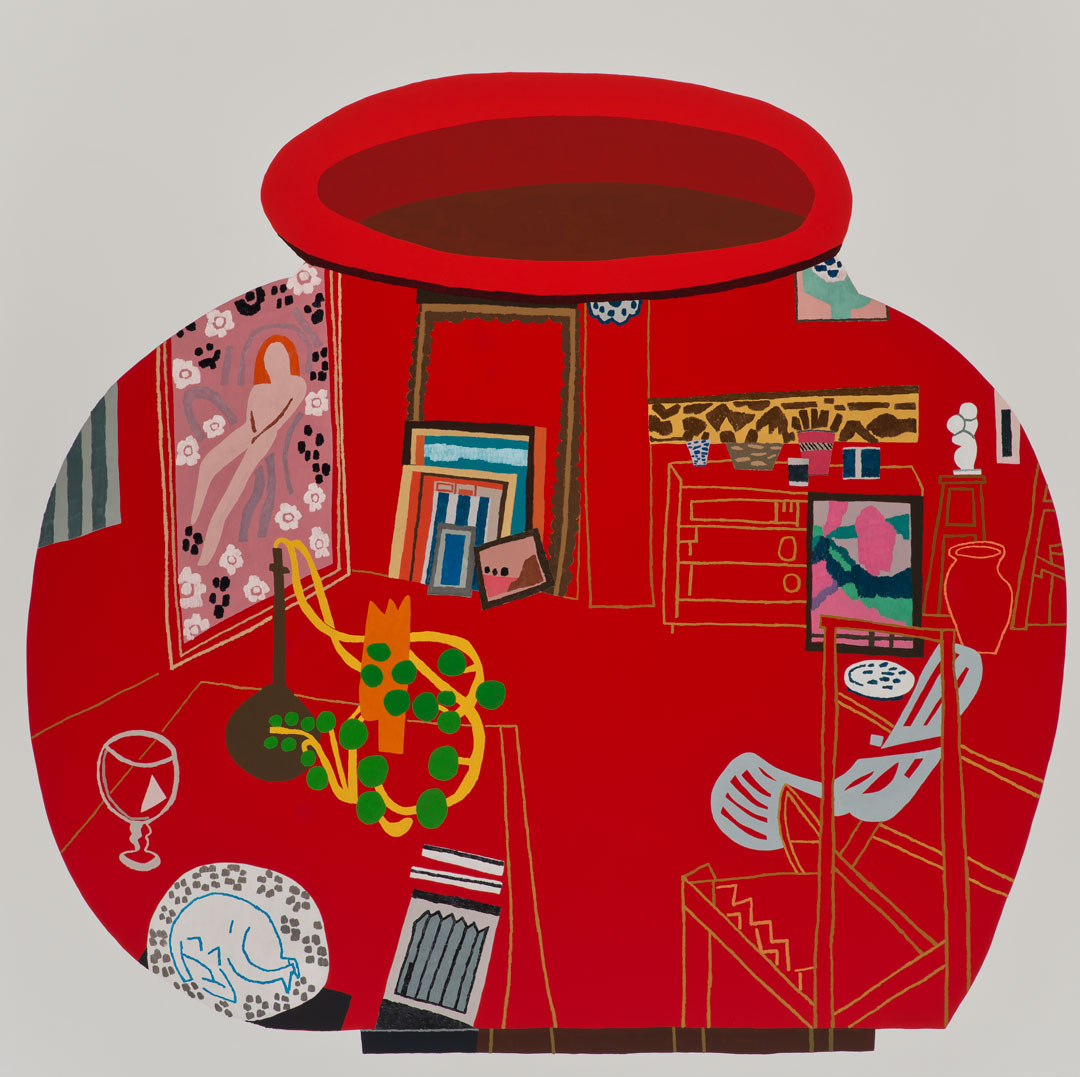
Jonas Wood can’t paint from life (and he doesn’t really care) “I was always told, ‘A figurative painter has to paint from life.’ I can’t paint from life for shit. I’d always get, ‘Your paintings are so flat, there’s no space, there’s no perspective.’ Well, that’s the vibe I like. I want it to be flat, so I’m going to make this work versus trying to fit into a mould of painting”
He sees himself as part of a tradition, and recognises his forebears and his contemporaries “I’m obviously connected to the histories and traditions of painting – especially modernism and postmodernism – and I reference the painters of those traditions. Luc Tuymans, Peter Doig, David Hockney, Alex Katz, Lucian Freud – those guys are all postmodern painters who love modern painting. That’s the way I think about it. I’m part of the third or fourth generation of people post-Cubism who acknowledge that this is the canon they’re painting into.”
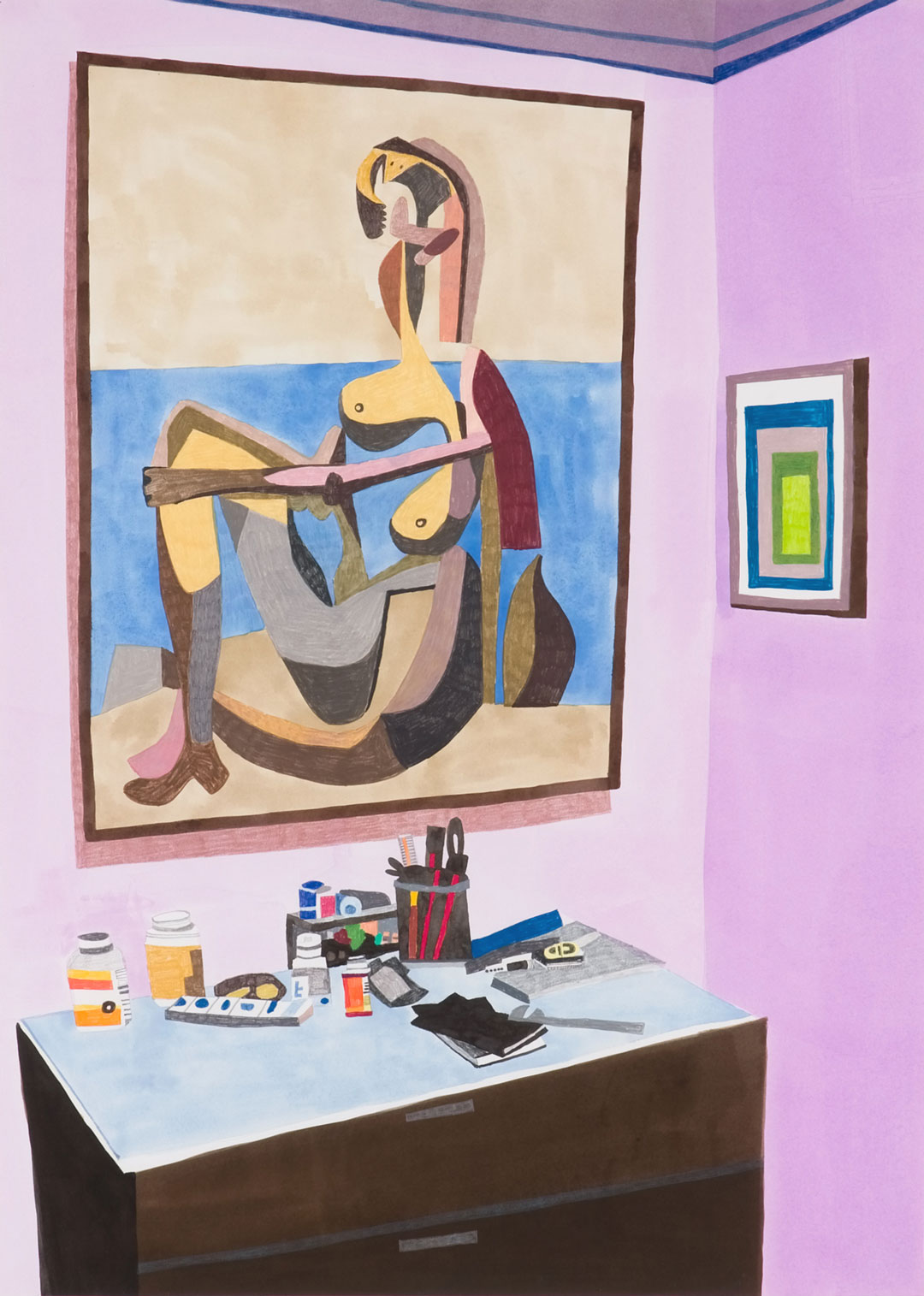
For his first solo show in New York, back in 2007, gallerist Anton Kern tried to ship the paintings via a furniture removal company “They weren’t art movers. He sent a furniture mover, and there were a bunch of chairs in the truck, and they wanted to put the paintings in it, and I refused. Then they sent somebody else. That aside, working with Anton Kern and Michael Clifton, who was there at the time, was an amazing experience. My mom came. It was two years before she passed away. It was the last show that she went to, because she was too sick to go to the next show in 2009. I remember that it felt very, very surreal to be showing at this gallery. When Anton offered me the show in February, it was 8:00 in the morning. I almost cried. He said, ‘Do you think you want to use the whole space?’ and I said, ‘Yes.’ I came back to LA, and somehow people knew about it, and were coming up to me to say congratulations, and telling me how great this gallery was. My life totally changed. I made, I think, $80,000, and then I rented a giant studio that cost $4,000 a month. It was totally insane. I remember I was advised not to do it.”
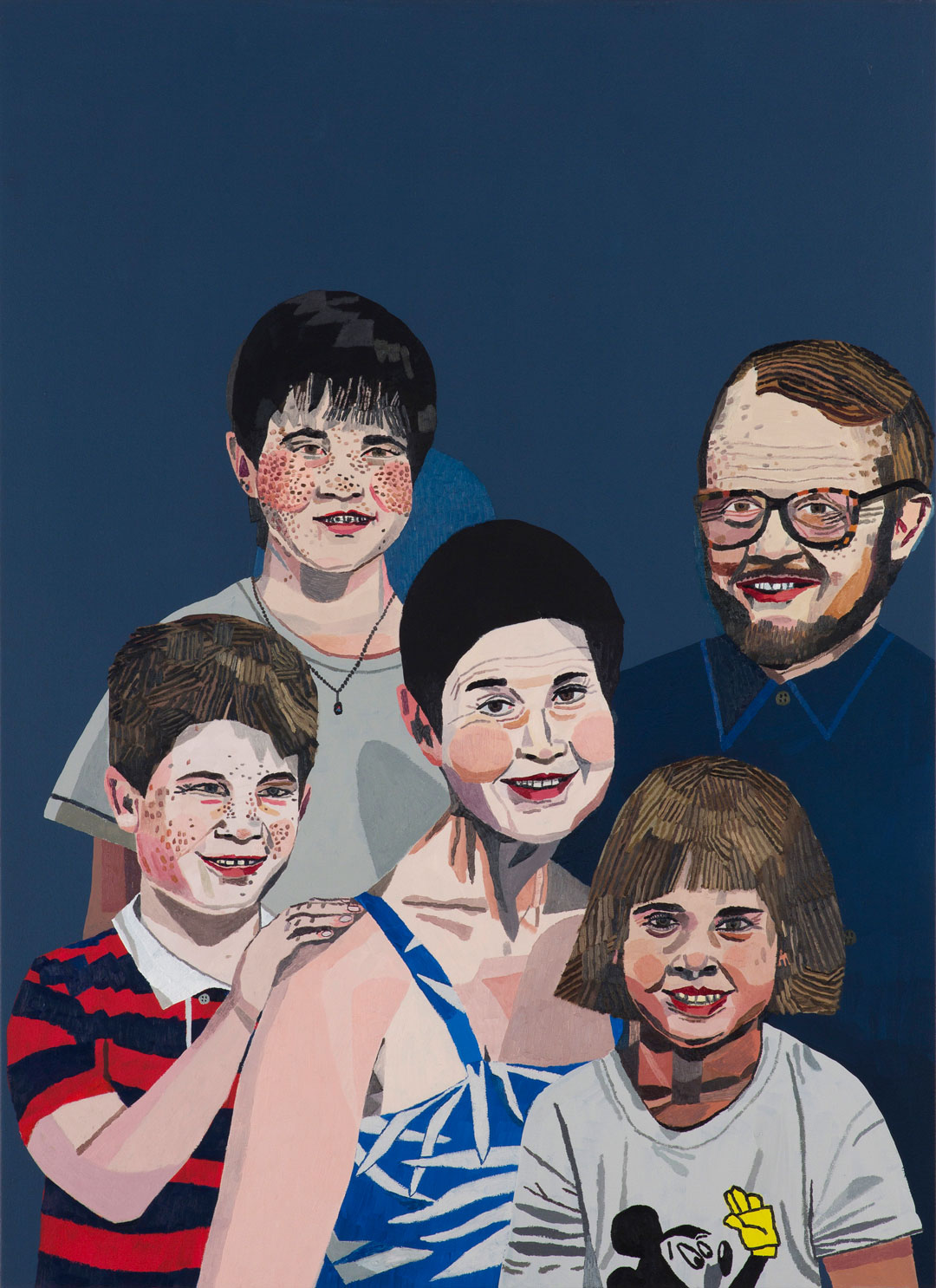
He’s in his early forties, but he’s been painting professionally for over a decade “In retrospect, the fact that I was able to quit my job in 2006 seems crazy. I wouldn’t advise that for other people. But the instant the opportunity came, that’s when my studio started to feel more sophisticated.”
He started featuring sports stars in his paintings, because he couldn’t keep painting his family “The reason why I started painting sports portraits is because I didn’t want to paint my family all the time. Images of athletes were accessible, and I could just appropriate and use them."
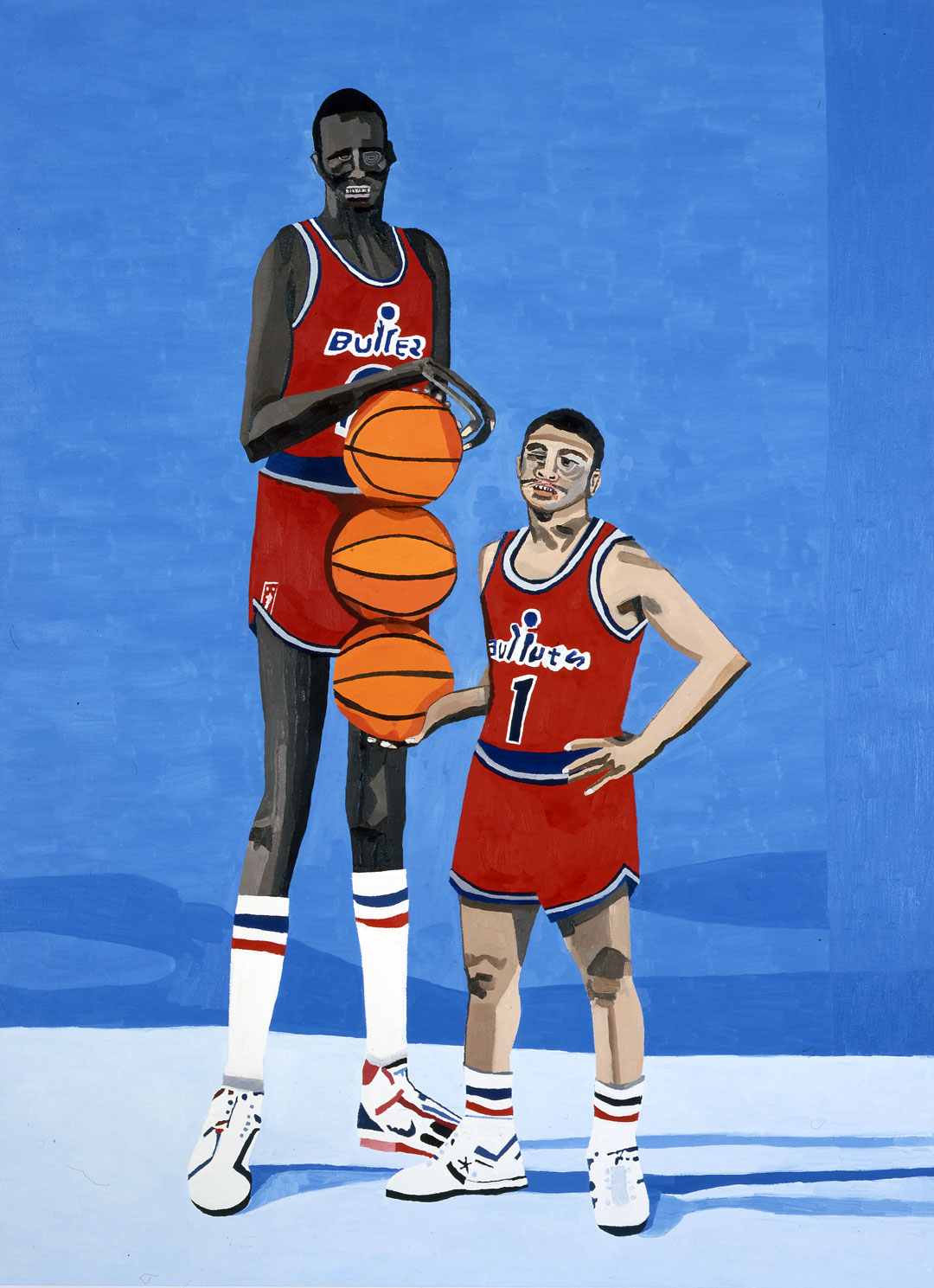
However, you won’t see any American football or hockey players in his pictures “That’s because they wear helmets. I’ve never got into football players because I feel like their humanity is lost.”
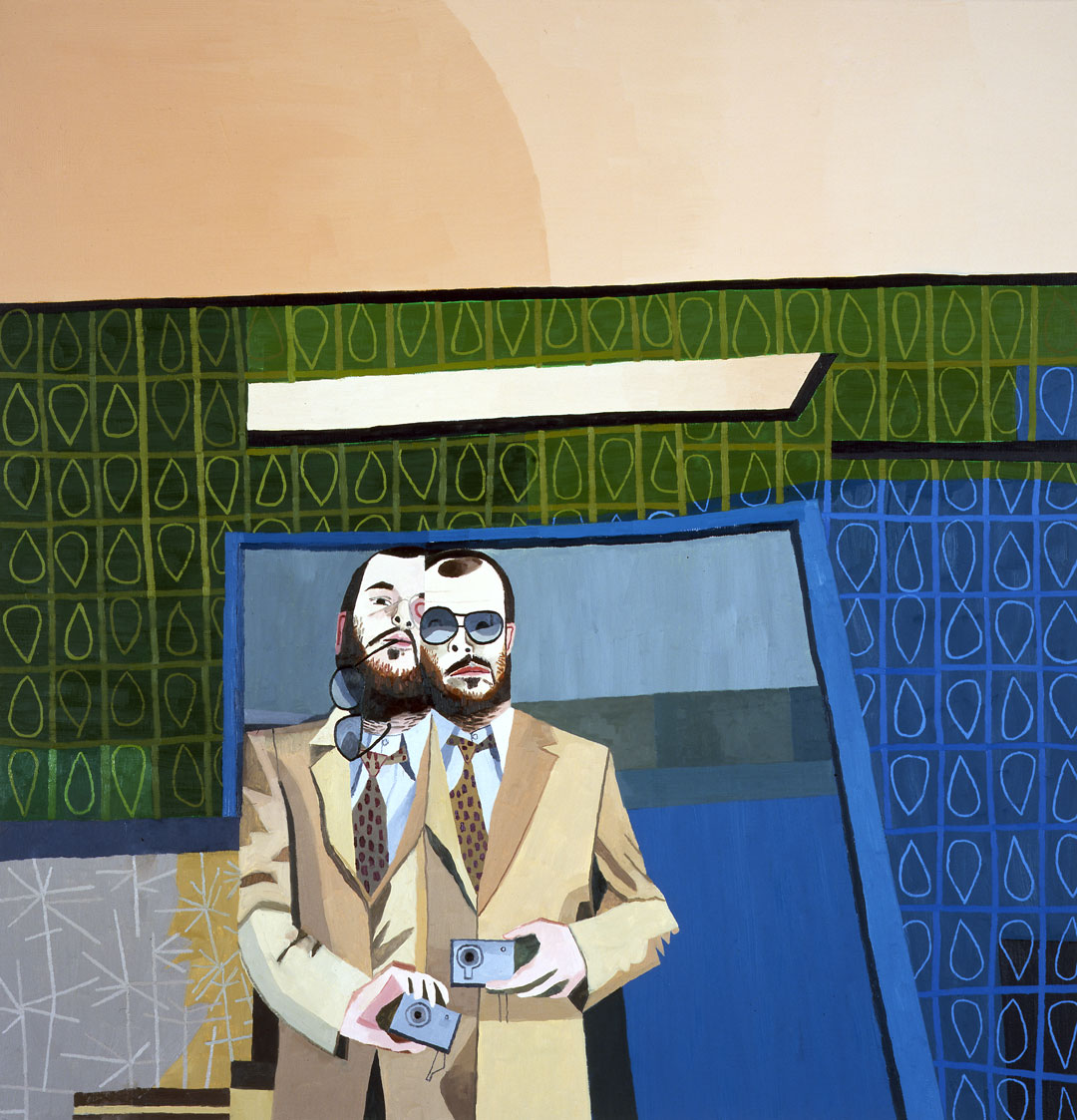
One of his sportsman paintings would certainly fail a drugs test “This [Boston Celtics basketball player] Larry Bird drawing I made, I actually stayed up all night on cocaine when I made it. It was one of my first experiences with cocaine. I’d only been in LA for a year. I knew other people that would do drugs to finish their work, kids who were in grad school in California. It seemed like a part of their process – you know, in a bad way. I stayed up really late, I knew I wanted to finish the drawing, and did a bunch of drugs. The fact that I was in an altered state might have something to do with why it looks so trippy, although it’s also very romantic. In a way, it’s about Boston, and my youth, and hero worship. But it’s also about colour and flat amorphic shape.”
Though he’s found success, he’s been quite careful not to churn out popular pieces “In 2007 and 2008, when I was coming up, I was watching people have success, and a lot of artists made just one thing. It would click, and then they’d go back to their studio and say, ‘I’ve got to make fifty of those because the dealer told me that’s what everybody wants.’ I was anti-that, because I knew that was a short-term market solution, and not a long-term painting solution.”
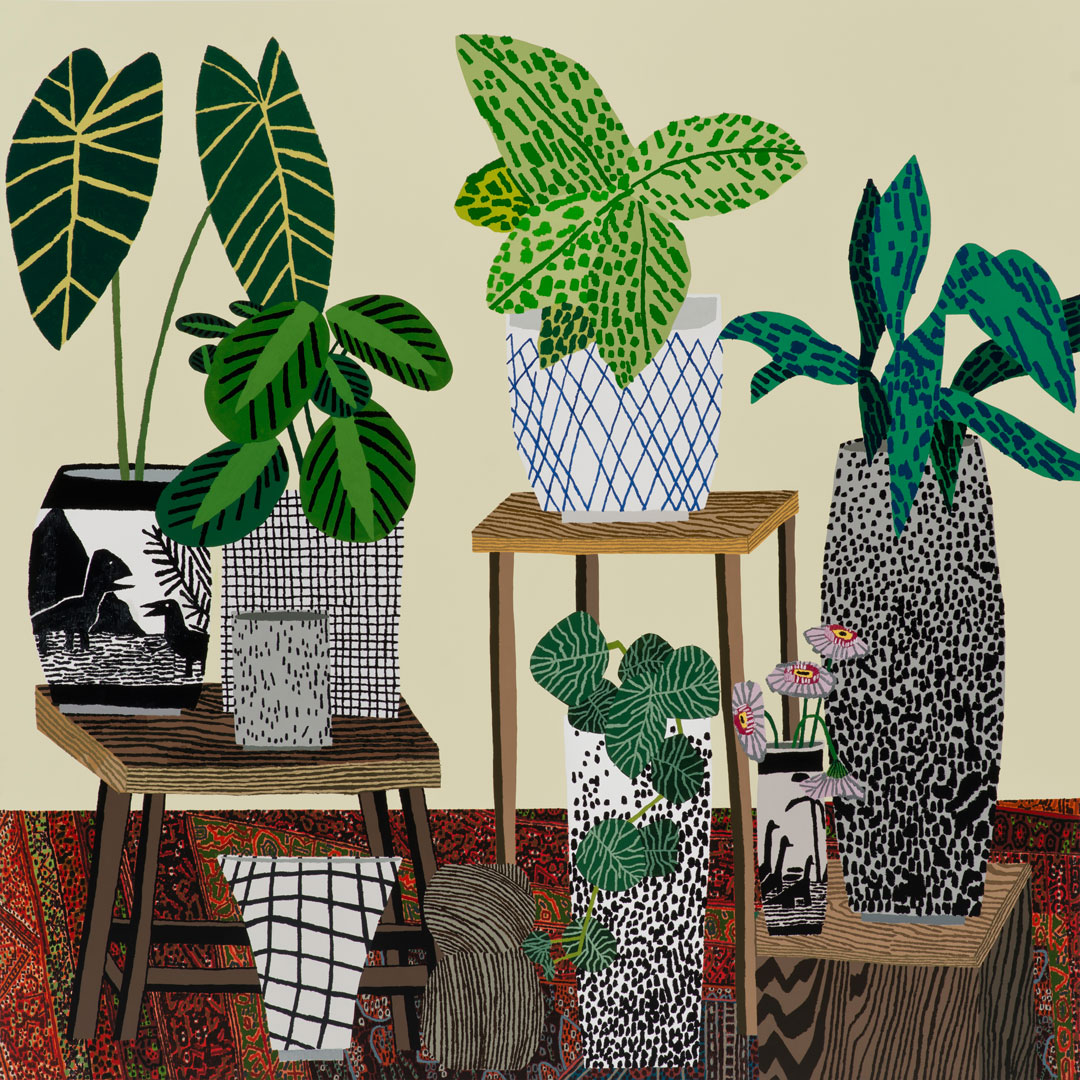
Instead, he looked to 20th century pioneers for career guidance “Piet Mondrian didn’t make the paintings that everyone recognizes until he was in his late forties. This was really significant to me. The teachers were saying, ‘Set yourself up with a good practice, because you might not hit it until you’re fifty. This is an evolving thing. Don’t trap yourself too soon.’ That became part of my philosophy.”
He really likes taking material from almost any source “It can be an image of my mom, but it could also be a weird plant, a Michael Frimkess and Magdalena Suarez Frimkess pot, my kid’s toy, a banana tree, a fish, or whatever. I think that’s all coming out of modern painting and my take on Cubism and Picasso. Picasso just painted whatever he wanted, and if it got a little freaky and abstract, then that was awesome. I never thought that painting was about creating an illusion.”
Wood’s wife, Shio Kusaka is a ceramicist, and you’ll see plenty of her pots in Wood’s still lifes “I use her work in my still lifes; it is just another example of me grabbing something from my life that makes sense to make paintings about. It’s my life. I decided to start painting still lifes right out of grad school because all of these other painters I admired really proved themselves in the genre. Then it just happened to be that I married somebody who produced these objects almost ready-made for still lifes. It just made it even richer and more intense for me, and a perfect platform to get the energy out.”
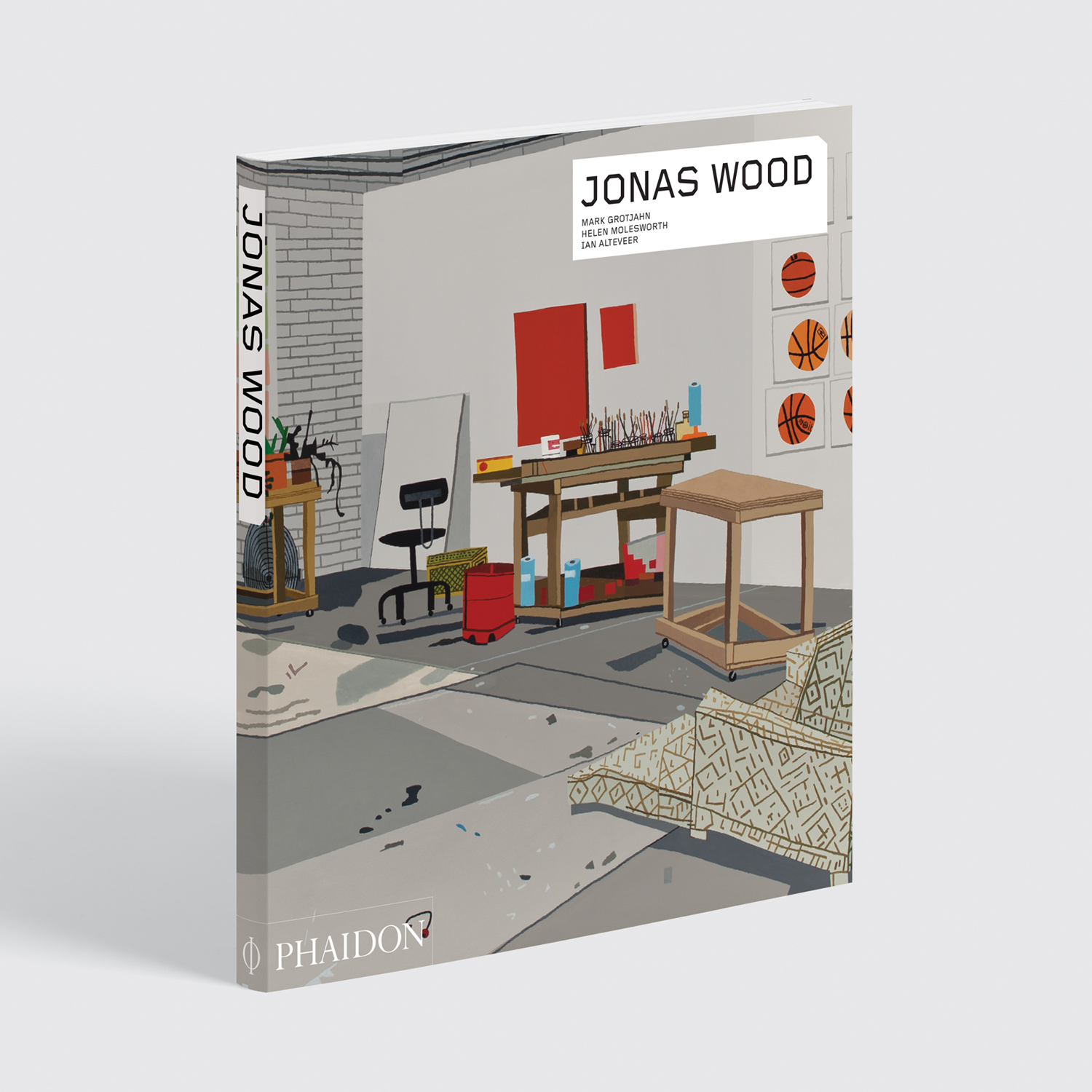
For much more on Wood's own thing, order a copy of our Contemporary Artist Series book on Jonas Wood. It features the full-length version of the interview excerpted above, as well as contributions by curator and writer Helen Molesworth, and Curator of Modern and Contemporary Art at The Metropolitan Museum of Art in New York Ian Alteveer, as well as many, many more reproductions of Wood's work. Order your copy here.